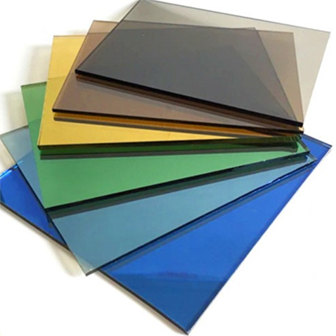10 月 . 12, 2024 18:39 Back to list
Current Trends in Float Glass Prices and Market Analysis
The Dynamics of Float Glass Pricing An Overview
Float glass, a product of advanced manufacturing processes, has become an essential material in various industries, notably construction, automotive, and interior design. Its combination of clarity, flatness, and uniform thickness makes it ideal for windows, facades, and decorative applications. However, like many commodities, the price of float glass is influenced by a myriad of factors, ranging from production costs to market demand and geopolitical situations.
Understanding Float Glass Production
The float glass manufacturing process involves melting raw materials such as silica sand, soda ash, and limestone in a furnace at high temperatures. The molten glass is then floated on a layer of molten tin, allowing it to spread out evenly and form a smooth, flat surface as it cools. This process, while efficient, is energy-intensive. The cost of energy is a significant factor in determining the final price of float glass. In recent years, fluctuations in energy prices due to geopolitical tensions, changes in supply chains, and shifts towards renewable energy sources have had a direct impact on float glass costs.
Raw Material Costs
The primary raw materials used in the production of float glass constitute a considerable portion of the overall production cost. Silica sand, soda ash, and limestone prices can be volatile, influenced by mining conditions, transportation costs, and regulatory measures. For instance, any disruptions in the supply of these materials, whether due to environmental regulations, trade tariffs, or natural disasters, can lead to spikes in float glass prices. The recent trend of sustainable sourcing and environmental considerations has also altered the landscape of raw material acquisition, further affecting cost dynamics.
Market Demand Fluctuations
The demand for float glass is closely tied to the construction industry, where it is used in residential, commercial, and industrial projects. As urbanization continues to increase, particularly in emerging markets, the demand for glass products is expected to rise. However, economic slowdowns, housing market fluctuations, and changes in consumer preferences can create substantial demand variability. For instance, during the COVID-19 pandemic, many construction projects were halted, leading to a temporary decrease in float glass demand and, subsequently, its price. As the global economy recovers, the bounce-back in construction activity may lead to increased prices.
float glass price

Technological Advancements
Innovations in glass-making technology can also influence float glass pricing. Advances that enhance production efficiency or reduce energy consumption can lower costs, potentially stabilizing or reducing prices. Furthermore, the growing emphasis on high-performance glass—such as energy-efficient, low-emissivity (low-E) glass—may shift market prices as manufacturers invest in new technologies and processes. Although these advanced products often come at a premium, their rising popularity may lead to greater market segmentation, ultimately affecting pricing strategies.
Geopolitical Influences
Geopolitical factors play a crucial role in the float glass market. Trade agreements, tariffs, and international relations can greatly influence pricing structures. For example, recent trade tensions between major economies may lead to tariffs on raw materials or finished goods, directly affecting float glass prices. Additionally, political instability in regions rich in raw materials can disrupt supply chains, further accentuating price volatility.
The Future Outlook
Looking ahead, the pricing landscape for float glass is expected to remain dynamic. As the construction industry rebounds and sustainability becomes a focal point, manufacturers must navigate a complex web of challenges and opportunities. Fluctuations in raw material costs, ongoing technological advancements, and geopolitical developments will all play critical roles in shaping the future pricing of float glass.
Moreover, as more clients and industries demand sustainable products, manufacturers may find that investing in greener production methods not only helps with compliance and marketability but also offers long-term economic benefits. In conclusion, understanding float glass pricing requires a holistic view of its production processes, supply chain intricacies, and market dynamics, all of which will continue to evolve in the coming years.
-
Wired Glass: A Strong and Secure Glass Solution for Various Applications
NewsNov.04,2024
-
Tinted Glass: A Stylish and Functional Choice for Modern Homes
NewsNov.04,2024
-
The Elegance and Versatility of Silver Mirrors
NewsNov.04,2024
-
The Advantages of Copper Free Mirrors
NewsNov.04,2024
-
Tempered Glass: A Reliable Choice for Modern Applications
NewsNov.04,2024
-
Pattern Glass: Stylish and Functional Glass for Modern Design
NewsNov.04,2024
Related PRODUCTS














